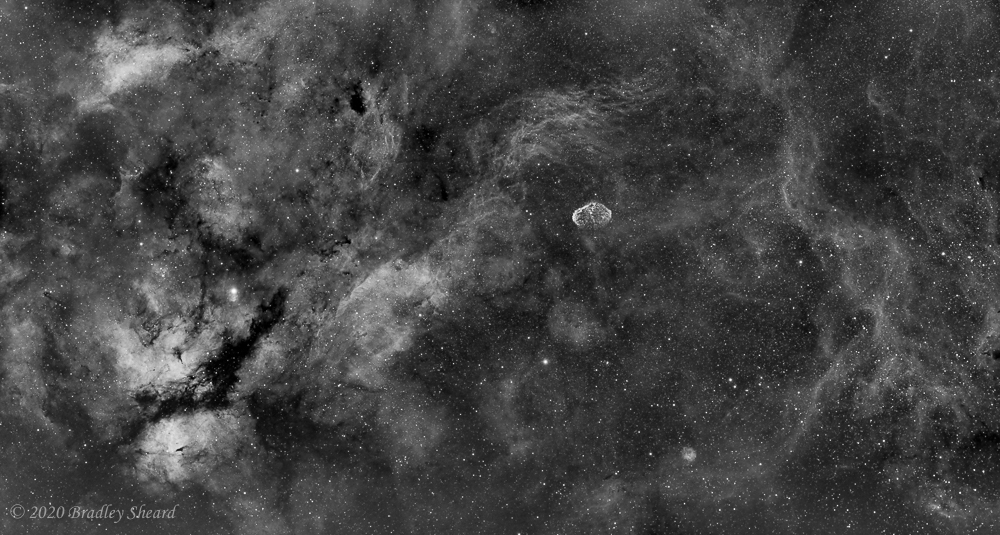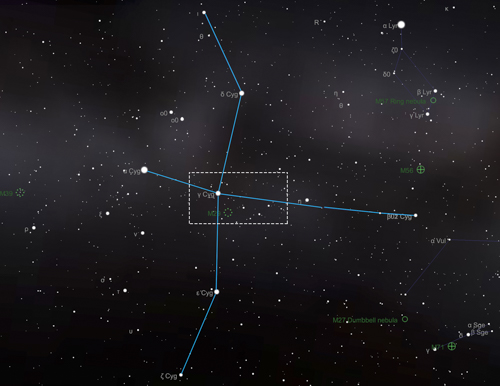Cygnus Cloud | |||
| « Previous | Back to Astrophotography Gallery | Next » | |
The constellation Cygnus the Swan lies along a rich band of the Milky Way filled with clouds of hydrogen gas. This image was taken through a hydrogen alpha filter, and what you are looking at is the light emitted by excited hydrogen atoms as their sole electron drops from the third to second orbital, emitting a photon of a specific wavelength (656 nm). Many of the dark areas are dark clouds of dust that are obscuring the stars and excited hydrogen lying behind the dust cloud, giving shape and form to the scene. This image was inspired by one of the detail plots in my interstellarum Deep Sky Atlas entitled the "Cygnus Cloud." A mouse rollover will reveal an annotated version of the image with some of the major stars and nebulous regions labeled, while a mouse-click will show a higher resolution version in a popup window. | |||

| |||
| Optics: | William Optics Redcat refractor | ||
| Camera: | ZWO ASI 1600MM | ||
| Exposure info: | ~20 x 5 mins per frame per filter (3 frame mosaic) | ||
| Filters used: | Astrodon H-alpha | ||
| Date: | December 2020 | ||
| Processing: | Pixinsight-->Photoshop-->Lightroom | ||
 | The constellation Cygnus the Swan is located along the belt of the Milky Way, making it densly populated with stars and gaseous nebula. The view at left shows the basic form of the constellation; the approximate outline of the image above is shown as a dotted rectangle stretching down the constellation's spine. Cygnus is one of the largest and most recognizable constellations in the northern sky in summer and fall, with its five brightest stars (Deneb, Sadr, Gienah, Al Fawaris and Albireo) forming a distinctive "cross," and the constellation is sometimes referred to as the Northern Cross. Deneb is a blue-white supergiant of magnitude +1.33 and easily the brightest star in Cygnus. As can be seen in the H-alpha image above, the constellation is brimming with clouds of excited hydrogen gas. There are apparently quite a few myths associated with the constellation....quoting from Reference 1 "Cygnus the Swan is supposed to be Zeus (Jupiter), king of the gods, in disguise. Zeus assumed this form when visting one of his many lady loves, Leda, Queen of Sparta. The result of the liaison was an egg, out of which hatched the twins Castor and Pollux and also Helen, who would become the beautiful Helen of Troy, with the 'face that launched a thousand ships.' Pollux and Helen were both Zeus' children, but Castor was not; he was the son of the King of Sparta." |
| Plot Credit: The Sky Live | |
| The Sky Live |
REFERENCES
1. Kerrod, Robin "The Star Guide: How to Read the Night Sky Star by Star." New York: MacMillan, 1993